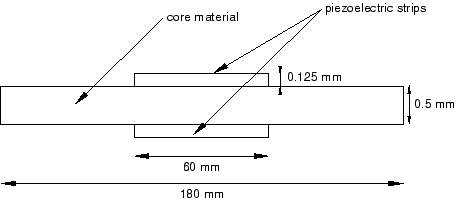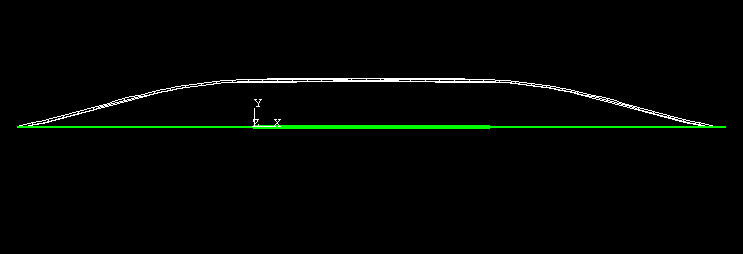Geometry and material
The transducer is shown in Figure 1. It has a composite beam that is 0.0025 m wide and 0.18 m long. The initially straight beam has a 0.0005 m thick insulating core; 0.000125 m thick PZT–5H piezoelectric strips are bonded to the top and the bottom faces of the core material. The piezoelectric strips are only 0.060 m long and are centered at the beam mid-span. The piezoelectric strips are polarized along the beams in the through-thickness direction. The properties for the PZT–5H material are as follows:
Elastic properties:
| Engineering constants | |
|---|---|
| 60.61 GPa | |
| 48.31 GPa | |
| 60.61 GPa | |
| 0.512 | |
| 0.289 | |
| 0.408 | |
| 23.0 GPa | |
| 23.5 GPa | |
| 23.0 GPa | |
Piezoelectric coupling matrix (strain coefficients):
Dielectric matrix:
The local 1-direction is in the beam longitudinal direction, and the local 2- and 3-directions are in the beam cross-section. From these matrices it can be seen that the poling direction is in the local 2-direction of the piezoelectric strips.
The core material is elastic and isotropic with a Young's modulus of 6 GPa, a density of 1500 kg/m3, and a Poisson's ratio of 0.35.







